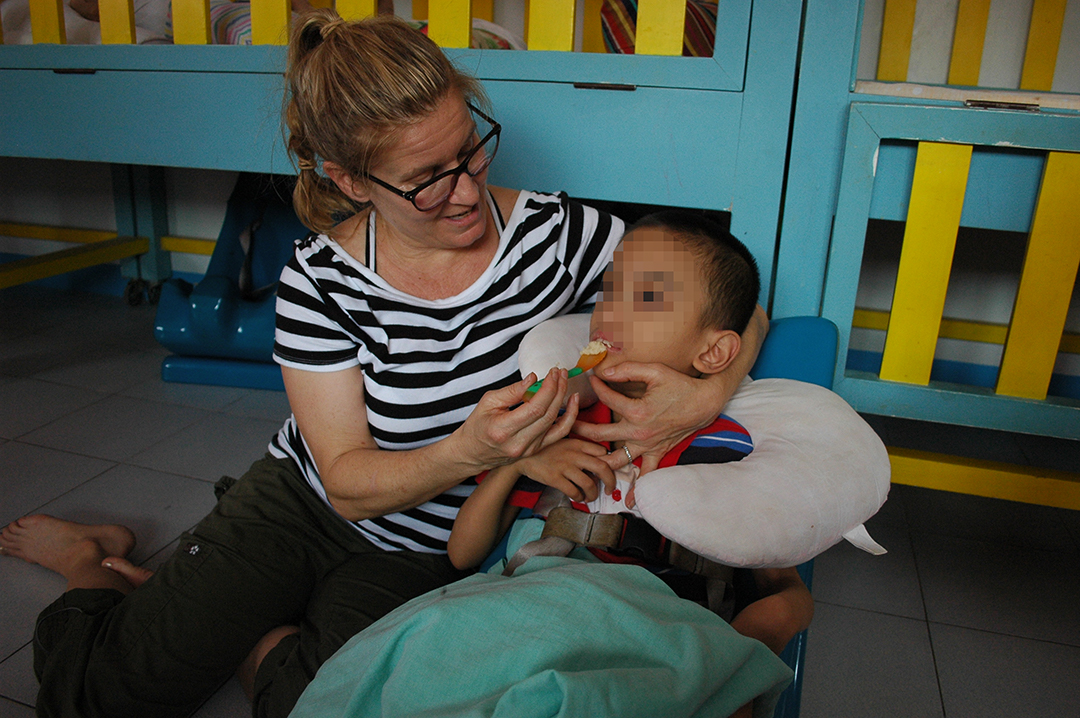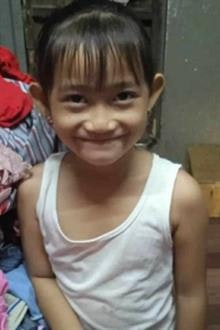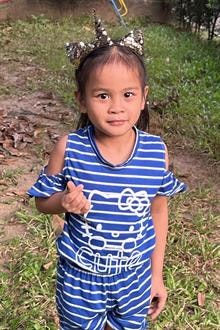Born with cerebral palsy and placed in an orphanage at 10 months old, Analyn had a small world — mostly consisting of the ceiling tiles above her crib in the Philippines. But then, an unexpected intervention changed everything.
Analyn’s world was small. About four ceiling tiles to be exact. Ceiling tiles that she stared at for hours and hours every day and every night from her crib at an orphanage in the Philippines.

Analyn has cerebral palsy and first came to the orphanage at 10 months old. Her mother kept her pregnancy a secret, even from her family. For 10 months, she lived in a mother and child shelter with Analyn, but she could only stay so long. Older in age, Analyn’s mother couldn’t care for Analyn in addition to her other children and grandchildren. So she made what she thought was the best decision for Analyn, and placed her in an orphanage before returning to her family.
From the beginning, caregivers at the orphanage loved Analyn.
“She liked being hugged and cuddled, she smiled when talked to and laughed aloud when tickled,” recalls Ryan Justo — a staff member at Holt’s partner organization, Kaisahang Buhay Foundation (KBF) — about when Analyn first came into care. But because of her special need, she required different care than the other children, and was often left on her own.
Cerebral palsy is a neurological disorder that can impact children’s motor skills, muscle tone, communication ability and movement. Analyn’s cerebral palsy primarily affects her legs, but also makes it difficult for her to control her body in general.
She began seeing a physical therapist weekly to help her develop coordination with her arms and legs, which would move spastically at times, and to strengthen her body to become more mobile.

But her caregivers — the ones who changed her, fed her and interacted with her the most — had little experience working with children with cerebral palsy. Especially when it came to feeding.
Thinking it was the easiest way for Analyn to eat, Analyn’s caregivers fed her while she was lying down —either completely on her back or reclined in someone’s arms.
But this caused Analyn to aspirate, to choke and get fluid into her lungs. This can result in pneumonia or other serious respiratory infections. Not to mention that the constant choking was scary for Analyn. She did not look forward to eating.
Analyn’s caregivers saw that something was wrong, but they didn’t know what else to do. They were concerned about safely providing her with the care and support she needed.
A lack of nutrition and feeding training among caregivers has led to widespread use of dangerous feeding practices for children who are unable to feed — and often unable to speak for — themselves.
Unfortunately, Analyn’s situation is not unique. While never intentional, improper feeding practices — especially for children with special needs — is an issue in care centers all around the world. It’s an issue that can negatively impact the rest of a child’s life.
“Poor feeding practices can cause not just aspiration,” says Emily DeLacey, the director of Holt’s nutrition and health programs, “but also pneumonia, choking, poor nutrient absorption, emotional trauma and other psychological and developmental ailments.”
A lack of nutrition and feeding training among caregivers has led to widespread use of dangerous feeding practices for children who are unable to feed — and often unable to speak for — themselves.
That’s why improving feeding practices, changing the way children are fed, is critically important. Especially for children with special needs. That’s why Holt launched the Child Nutrition Program in 2013, a one-of-its-kind initiative that has changed the lives of thousands of children in orphanage care around the world.
“Before the Child Nutrition Program, trainings for caregivers on how to properly feed and position children with disabilities by and large did not exist,” Emily says. “Caregivers were forced to just go off of their personal experience and best guesses as to what is correct.”

But now, through Holt’s program, caregivers are specially trained on nutrition and feeding practices for children in care. From positioning to bottling to spoon-feeding and self-feeding and more, these trainings have completely changed the way caregivers care for children.
In July 2017, Holt’s child nutrition program team traveled to the Philippines to train caregivers at Analyn’s care center.
Her life and health remarkably changed.
Her caregivers learned the best feeding position — upright! — for children like Analyn with cerebral palsy. They learned how to spoon feed her and support her jaw to aid in swallowing. Today, at nearly 5 years old, Analyn sits upright in a special highchair and is even learning to feed herself! She now uses a special cup to ensure safe swallowing, decreasing the risk of aspiration.
Analyn isn’t scared to eat anymore.
Holt’s child nutrition program focuses not only on how children eat — but what they eat, too.
Analyn’s life and health remarkably changed. She isn’t scared to eat anymore.
With Holt’s training resources, the nurse and cook at Analyn’s care center worked together to create a high-protein, high-calorie diet for Analyn, even with modified food textures to meet her individual needs.
These huge changes in diet and feeding, in addition to her continued physical therapy, have completely changed Analyn’s world. Instead of laying down all day — in her crib and at meals — she spends more of her day upright, engaging with the world around her.

Just last month, in February 2019, the child nutrition program team visited Analyn’s care center to provide follow-up trainings and check in on the children there. They saw Analyn. And her remarkable change astounded them.
“We saw a happy girl who played with her friends, enjoyed her caregivers’ attention, and could actively participate in her meals,” Emily says. “Additionally, we can see that she is now on a stable growth trajectory and is no longer at risk of malnutrition. It was incredible to see the difference in this little girl’s life. This is what Holt’s nutrition program is all about.”
Megan Herriott | Staff Writer
*Name changed. Analyn’s face is blurred to protect her privacy.

Support Holt’s Child Nutrition Program
Your gift to Holt’s child nutrition program will provide life-changing nutrition and feeding support to children living in poverty and in orphanages around the world.





It’s amazing how small changes can have such a tremendous impact on their life. I pray that Analyn continues to improve and one day is able to help others with cerebral palsy.